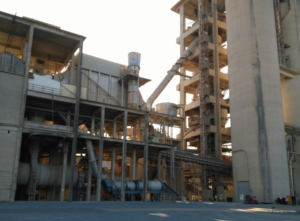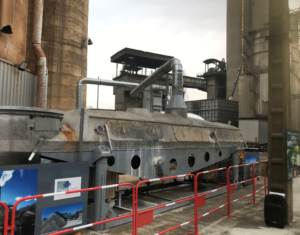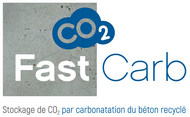To achieve the goal of reducing the carbon footprint of concrete by means of accelerated carbonation, the FastCarb project covers both the upstream and downstream aspects. The part of the project concerned with downstream aspects will set out to design an accelerated carbonation process and implement it at the pre-industrial scale, to verify that the concretes manufactured with the treated aggregate have the required properties and to characterize the environmental and economic viability of the envisaged industrial recycling process
WG2 includes 3 sub-groups:
Application of the process on an industrial scale
WG2.1 has as its goal the application of accelerated carbonation on an industrial scale by setting up industrial scale demonstrators. The idea here is not to develop specific equipment but to convert existing industrial equipment into a carbonator. Two types of equipment have been created, on the one hand a static system (aggregate and gas) with a reconfigured container connected to a source of pure industrial CO2, and on the other two dynamic systems. Thus, the Vicat plant in Créchy connected a rotary drum dryer fed with sand and crushed concrete chippings to the kiln gases (Figure 1) while the LafargeHolcim plant in Val d’Azergues used a fluidized bed dryer (Figure 2).
In addition, coordination with WG1.1’s experiments will mean the laboratory will also be able to test gravel filter technology, which was common used in cement plants in the 1970s for dedusting kiln gases.
The value of these three technologies is twofold: they are relatively simple to implement and they can be easily automated.
Installation work took place during the last quarter of 2019 and the first tests started immediately using local materials and industrial gases, in order to carry out an initial feasibility study of the devices and identify possible avenues for improvement. The first results without optimization showed a CO2 capture rate in the order of 3 to 4%, i.e. 30g of CO2 per kilo of crushed concrete. In addition, the high moisture content of the fumes generated a large quantity of pure water which is aggressive when it condenses, and it became clear that this aspect of the process needed to be better managed. Modifications were made during the first half of 2020 with a planned restart in July 2020, with aggregate production targeted for September 2020 in order to conduct tests on concrete (WG2-2). The aggregates treated in this way will be characterized and the results compared with those obtained in the laboratory in order, in particular, to verify the applicability of the models developed by WG1.2. Finally, conclusions for the standardization of aggregates will be drawn from these trials.

Figure 1: Rotating drum at the Créchy plant

Figure 2: Fluidised bed dryer at the Val d’Azergues plant
Transition to concrete and full-scale applications
WP2.2 deals with the transition to concrete and application to precast elements and cast-in-situ structures. Initially, C25/30 and C45/55 concretes will be produced in laboratories with aggregate (sand and chippings) manufactured according to the processes developed in two cement plants – Val d’Azergues and Créchy. Comparative tests will be carried out on carbonated and non-carbonated recycled aggregate at different incorporation rates. This will make it possible to measure the impact of the carbonation of recycled aggregates on the main properties of concrete: performance in the fresh state, density of the granular skeleton, mechanical performance and durability. With regard to durability, we will verify that the treatment of the aggregate does not affect the risk of corrosion of the reinforcement in reinforced concrete. During a second phase, full-scale trials will be conducted in which recycled carbonated aggregate will be incorporated within concrete. The aim is to produce a variety of prefabricated products (blocks, curbs, stairs) and parts of cast-in-situ structures (construction of shells, in particular analysis of the facings). The objective is to check the feasibility of using these aggregates in real situations and to specify the possible differences in behaviour with non-carbonated recycled aggregates.
Economic and environmental appraisals
WG2.3 considers whether the accelerated carbonation processes being considered for introduction on an industrial scale are environmentally acceptable and economically viable. As three technological solutions using different processes have been selected, the objective of this working group is to identify the most efficient process in terms of both environmental and economic considerations (cost/benefit ratio). The environmental assessment will be based on the Life Cycle Assessment method that quantifies environmental impacts. The three considered solutions will be evaluated in order to identify the most “appropriate ” one, and possibly find approaches for improving it. This study will also have a forward-looking component since it will take account of potential changes in the price of carbon (the price of a tonne of CO2 reached approximately €26 at the end of 2019 while it had remained constant at around the €5 before 2018. This will make it possible to assess the sensitivity of the selected scenarios to changes in the price of carbon.
